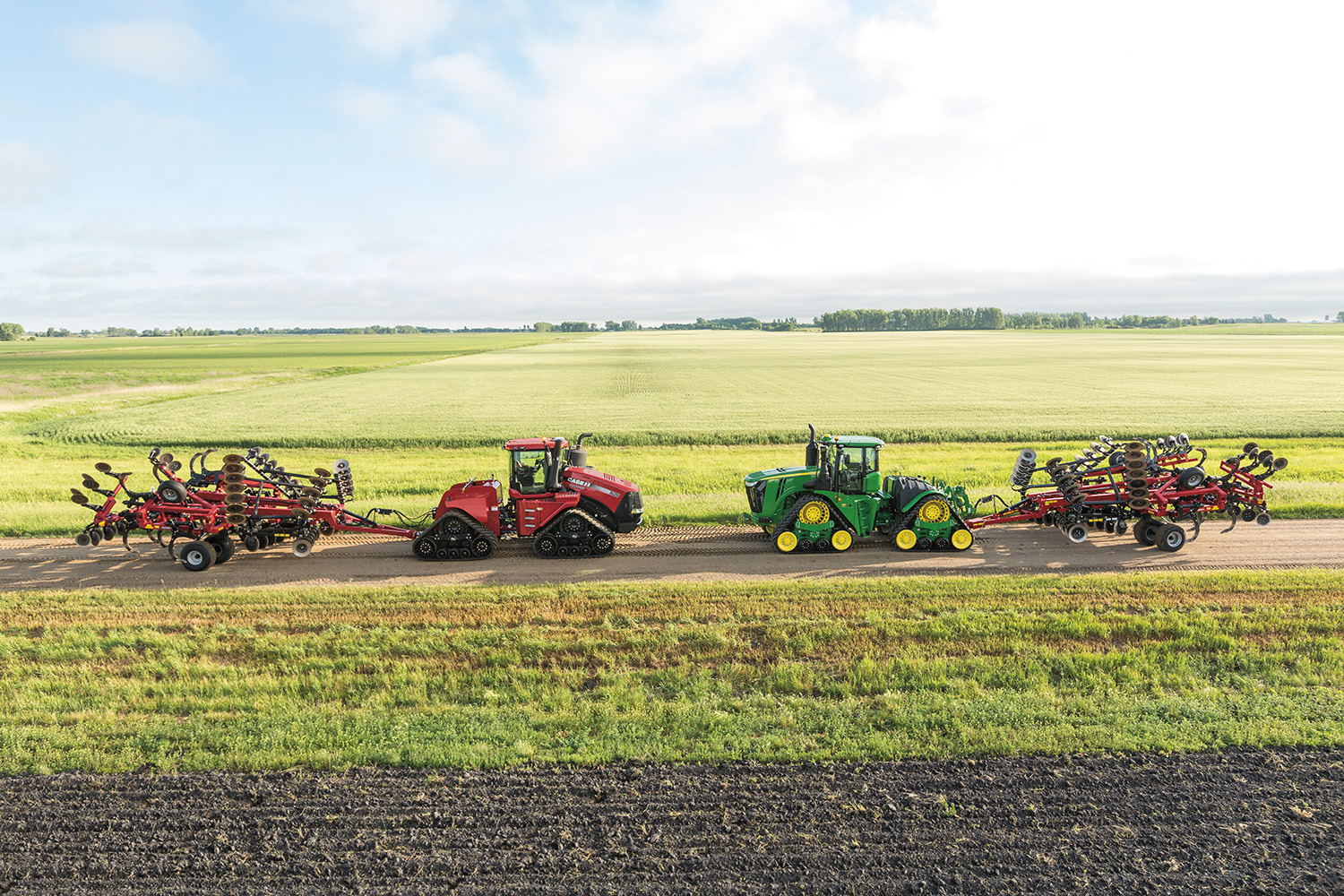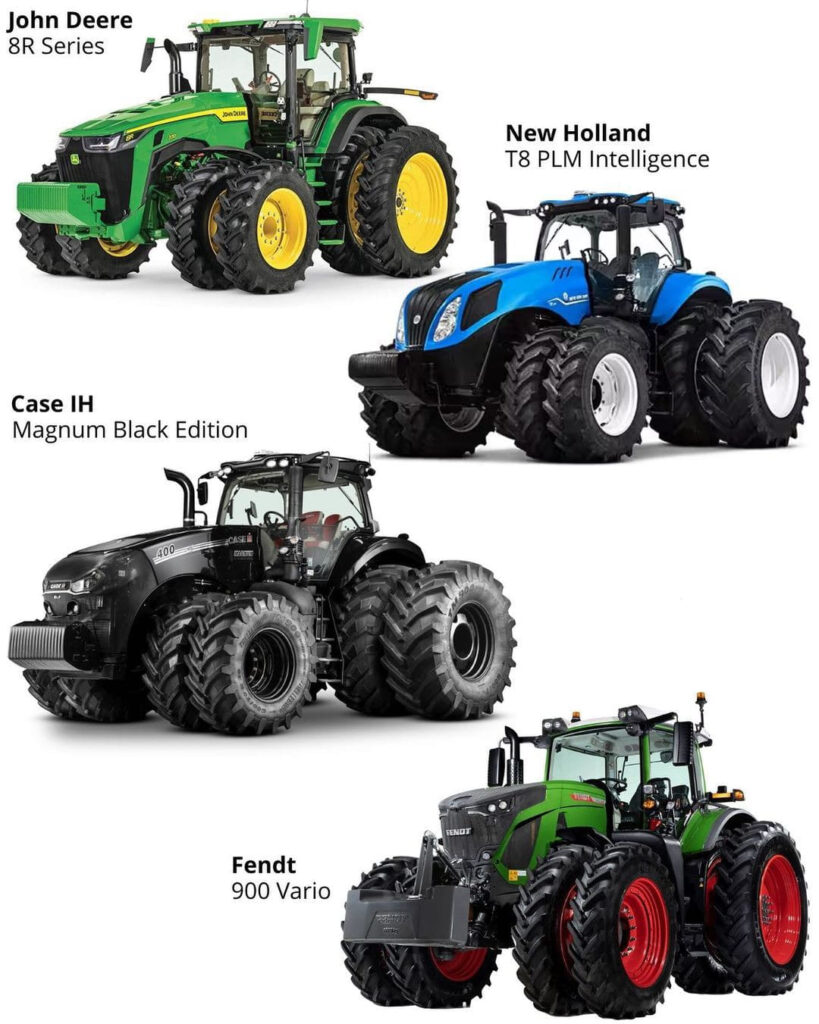The combine harvester is one of the most critical pieces of agricultural equipment in the United States, helping farmers efficiently harvest crops like wheat, corn, soybeans, and other grains. Among the many brands and models available, John Deere and Case IH are two of the most popular and trusted manufacturers of combine harvesters, with their models dominating U.S. markets. However, Claas and New Holland also have strong followings.
1. John Deere S700 Series
John Deere is synonymous with farming equipment, and its S700 series combines are particularly favored for their advanced technology, efficiency, and productivity.
Features:
- Intelligent Solutions: The S700 combines are equipped with the John Deere HarvestSmart™ system, which adjusts speed, header height, and fan speed to optimize crop flow and grain quality.
- Machine Integration: They offer John Deere’s Operations Center for real-time data tracking and performance analysis, allowing operators to fine-tune settings for maximum efficiency.
- Advanced Crop Processing: The ProDrive™ transmission and dual rotor systems maximize throughput and minimize grain loss, ensuring clean and efficient harvesting.
- Comfort and Ease of Use: The cab features an ergonomic design with a CommandCenter™ display, providing intuitive controls and easy access to vital machine data.
- Easy Maintenance: The ActiveYield™ system automatically calibrates grain flow, reducing the need for manual adjustments and ensuring consistent yield data.
Benefits:
- Efficiency: The S700 combines are known for reducing crop loss and improving harvesting efficiency, even under challenging conditions like wet or downed crops.
- Precision Farming: The integration of GPS and machine learning systems allows farmers to increase yield while using fewer resources, making farming operations more sustainable.
- Low Downtime: The high-quality build and ease of maintenance ensure less downtime and longer machine life.
Specialty:
The John Deere S700 series is especially favored for its precision agriculture capabilities. It is a top choice for large-scale farms looking to maximize productivity and reduce waste. The ability to collect real-time data and make immediate adjustments makes it a favorite for tech-savvy farmers who rely on data-driven decisions.
2. Case IH Axial-Flow 250 Series
Case IH has a long history of producing durable, high-performance combines, and its Axial-Flow 250 Series combines are particularly popular in the U.S.
Features:
- Single Rotor System: The Axial-Flow combines use a single rotor design, which improves crop flow, reduces damage to the grain, and minimizes the risk of clogging. This system allows for high throughput, especially in difficult field conditions.
- Advanced Cab Technology: The AFS Pro 700 display provides detailed machine diagnostics and operational data, helping farmers optimize settings and monitor performance.
- Efficient Grain Handling: With the grain tank offering a capacity of up to 400 bushels, these combines are designed for large-acreage operations, reducing the need for frequent unloading.
- Powerful Engine: The 250 Series comes equipped with FPT Industrial engines, providing exceptional power and fuel efficiency.
Benefits:
- Productivity: The single rotor design allows for better harvesting in tough conditions, such as heavy or damp crops, leading to lower grain loss and more efficient threshing.
- Fuel Efficiency: Case IH combines are known for their fuel-efficient engines, allowing farmers to get more done while using less fuel.
- Simplicity and Durability: Fewer moving parts compared to conventional combines result in less wear and tear, reducing maintenance costs.
Specialty:
Case IH’s Axial-Flow technology is renowned for providing consistent, high-quality results in all crop types, including challenging conditions like uneven or high-moisture crops. Their ease of operation and low maintenance are key factors that make them ideal for both large commercial operations and family-run farms.
3. Claas Lexion Series
Claas is a German company that has seen increasing popularity in the U.S. market. The Claas Lexion series combines are recognized for their efficiency and innovative features, especially in larger-scale grain farming.
Features:
- Cemex System: Claas combines feature the Cemex (Continuous Flow) system, which allows for uninterrupted flow of grain through the machine, even when dealing with high volumes.
- APS Hybrid System: The APS (Accelerated Pre-Separation) system ensures that the crop is threshed with less power and better efficiency, reducing grain loss and maximizing throughput.
- Wide Header Options: The Lexion combines offer a range of header options for various crops, such as Flex and Draper headers, providing flexibility and precision for different harvesting conditions.
- High-Capacity Grain Tank: Claas combines have some of the largest grain tank capacities in the industry, ranging from 300 to 500 bushels, which minimizes the need for frequent unloading.
Benefits:
- High Throughput: The Lexion series is designed for maximum output in high-volume operations. The continuous flow system ensures that the combine can operate at peak efficiency for longer periods without interruptions.
- Clean Grain: The combination of the APS system and the MultiCrop Separation technology helps achieve excellent grain quality with minimal loss.
- Advanced Technology: The Lexion combines are equipped with Claas Telematics for remote monitoring, giving farmers access to machine data and performance analytics from anywhere.
Specialty:
Claas combines stand out due to their engineering innovation and crop versatility. They are ideal for farms that require high-capacity machines that can handle diverse crop types with superior quality.
4. New Holland CR Revelation Series
New Holland combines are a favorite in North America for their performance and advanced technology, particularly in the CR Revelation series.
Features:
- Twin Rotor Technology: The CR Revelation combines feature the Twin Rotor® System, designed for optimal grain separation and minimal loss. This technology provides a smoother crop flow and better threshing performance.
- Advanced Grain Handling: New Holland’s SmartTrax™ and smart unloading system allow for greater operational flexibility and increased productivity, reducing fuel consumption.
- Dynamic Bale Technology: This feature helps adjust the combine’s settings based on field conditions to maximize efficiency.
- Cab Comfort: The Harvest Suite™ Ultra cab offers a panoramic view and advanced ergonomics, reducing operator fatigue and increasing productivity.
Benefits:
- Improved Grain Quality: The combination of twin rotors and efficient separation technology ensures better grain quality with less breakage.
- Fuel Efficiency: New Holland’s engines are designed for lower fuel consumption, which is crucial for large-scale farming operations.
- Reduced Crop Loss: The smart handling systems reduce grain loss, ensuring that no valuable crop is wasted.
Specialty:
New Holland combines are particularly popular among farmers who prioritize fuel economy and operator comfort. Their technology also makes them ideal for farmers looking for efficiency and sustainability in their harvest operations.
Conclusion: Which is the Best?
While John Deere, Case IH, Claas, and New Holland all offer excellent combine harvesters, the best choice depends on a farmer’s specific needs, such as crop type, field conditions, budget, and technology requirements.
- John Deere S700: Best for tech-savvy farmers looking for precision farming and data-driven decision making.
- Case IH Axial-Flow 250: Ideal for farmers seeking a reliable, fuel-efficient combine with a simple design and easy maintenance.
- Claas Lexion: Perfect for large-scale operations requiring high throughput and uninterrupted harvesting in a variety of crop types.
- New Holland CR Revelation: A good choice for those who want fuel efficiency, operator comfort, and advanced technology for precise grain handling.
Ultimately, the best combine harvester is the one that aligns with a farmer’s specific operational needs, preferences, and goals for efficiency, productivity, and sustainability.


